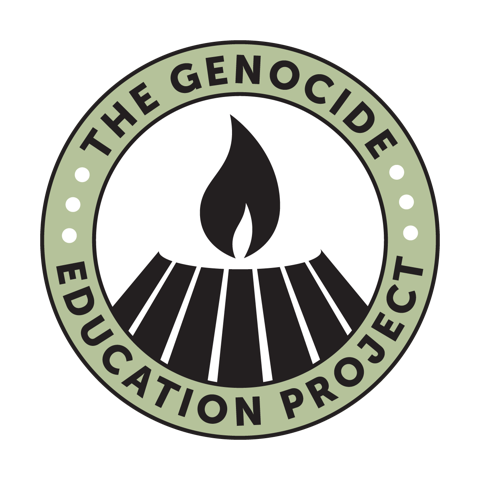| California Department of Education 2016 Tenth Grade History-Social Science Framework
Armenian Genocide Causes and Courses of WWI (excerpt: page 464-465): In 1915, as the Ottoman Empire declined, the Turkish government carried out a systematic genocide against the Armenian population that had been living on its historic homeland in what is now eastern Turkey. Turkish authorities first arrested hundreds of Armenian political and intellectual leaders, sending them to their deaths; Armenian men were conscripted into work camps where they were killed outright or through exhaustion. The remaining Armenians were ordered onto death marches into the Syrian desert, during which they were subjected to rape, torture, mutilation, starvation, holocausts in desert caves, kidnapping and forced Turkification and Islamization. More than 1.5 million Armenians, more than half of the population was eliminated in this way; virtually all their personal and community properties were seized by the government, and more than 500,000 innocent people were forced into exile during the period from 1915 to 1923. When the war ended in 1918 the Armenian population was reduced by 75% and their historical lands were confiscated by the Turkish government. Students may examine the reactions of other governments, including that of the United States, and world opinion during and after the Armenian genocide. The Red Cross’s aid to Armenian Genocide survivors also demonstrates the worldwide humanitarian response to the crisis and the emerging role of the International Committee of the Red Cross as an international non-governmental humanitarian organization. They should examine the effects of the genocide on the remaining Armenian people, who were deprived of their historic homeland, and the ways in which it became a prototype of subsequent genocides. To connect these multiple effects of war, students can consider the question: What were the consequences of World War I for nations, ethnic groups, and people? Causes and Consequences of WWII (excerpt: page 478-479) Immediately following the war, genocide, the systematic killing of members of an ethnic or religious group, was established as a crime under international law through the development of the United Nations. Emboldened by this lack of accountability, Adolf Hitler said to his generals on the eve of their invasion of Poland, “Who, after all, speaks today of the annihilation of the Armenians?” Numerous German military officers who had been stationed in Turkey during WWI, were aware of the Ottoman regime’s plan to destroy the Armenians, and some of them even issued orders for the deportation of Armenians. Without penalty, some later became leaders within the Nazi military apparatus that carried out the Holocaust. Teachers can introduce the history of the Near East Relief organization established by the former U.S. ambassador to the Ottoman Empire, Henry Morgenthau. Near East Relief came to the aid of hundreds of thousands of Armenian Genocide survivors through the establishment of orphanages, food and vocational programs, etc. Teachers can also use the example of the first international aid project of the Red Cross in helping Armenian Genocide survivors, and the phrase, “Remember the starving Armenians!” as a means to demonstrate to students the profound effect the Armenian Genocide had on the American public. History–Social Science Content Standards for California Public Schools World History, Culture, and Geography: The Modern World Section 10.5.5: Discuss human rights violations and genocide, including the Ottoman government’s actions against Armenian citizens.
|
